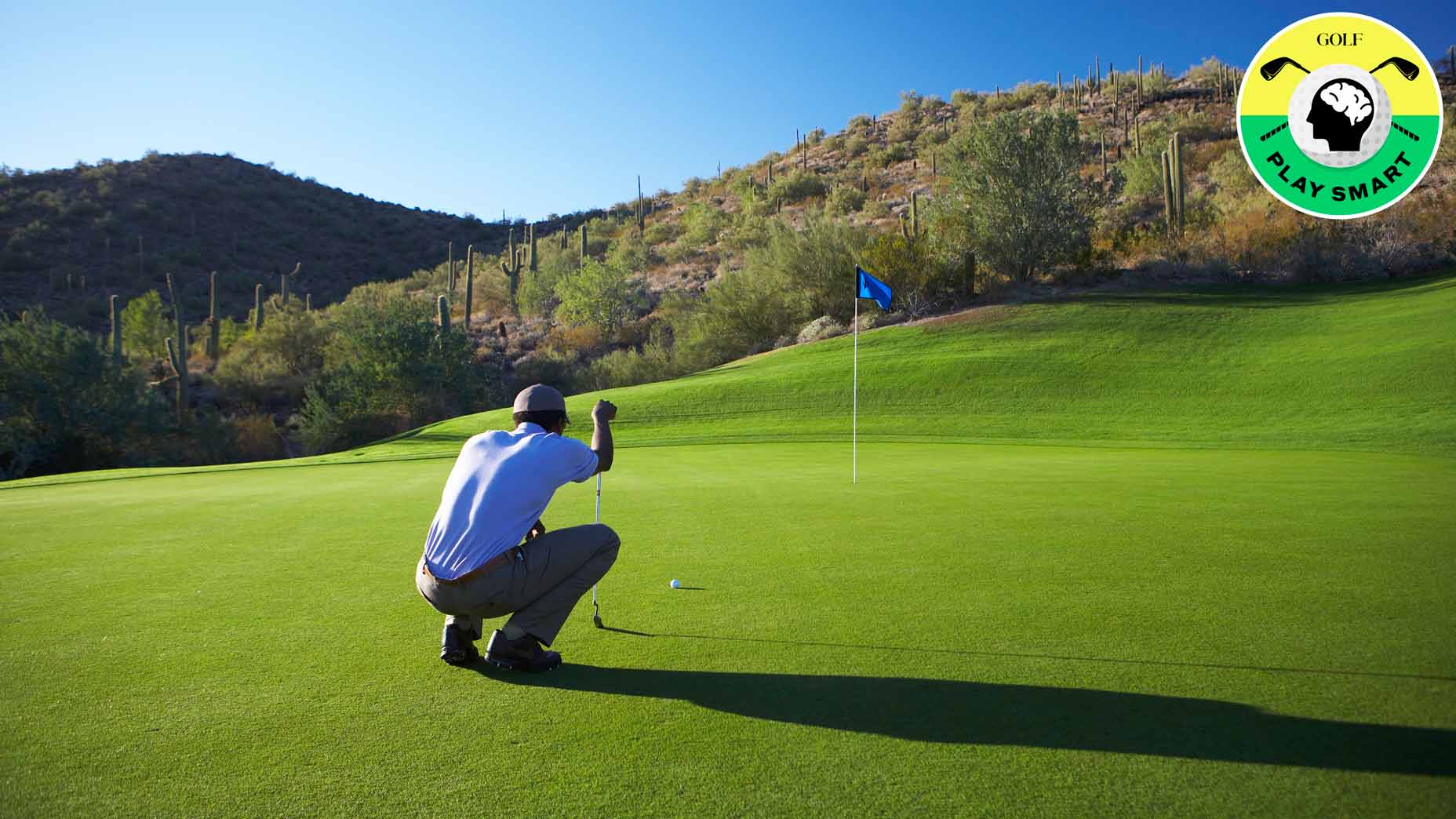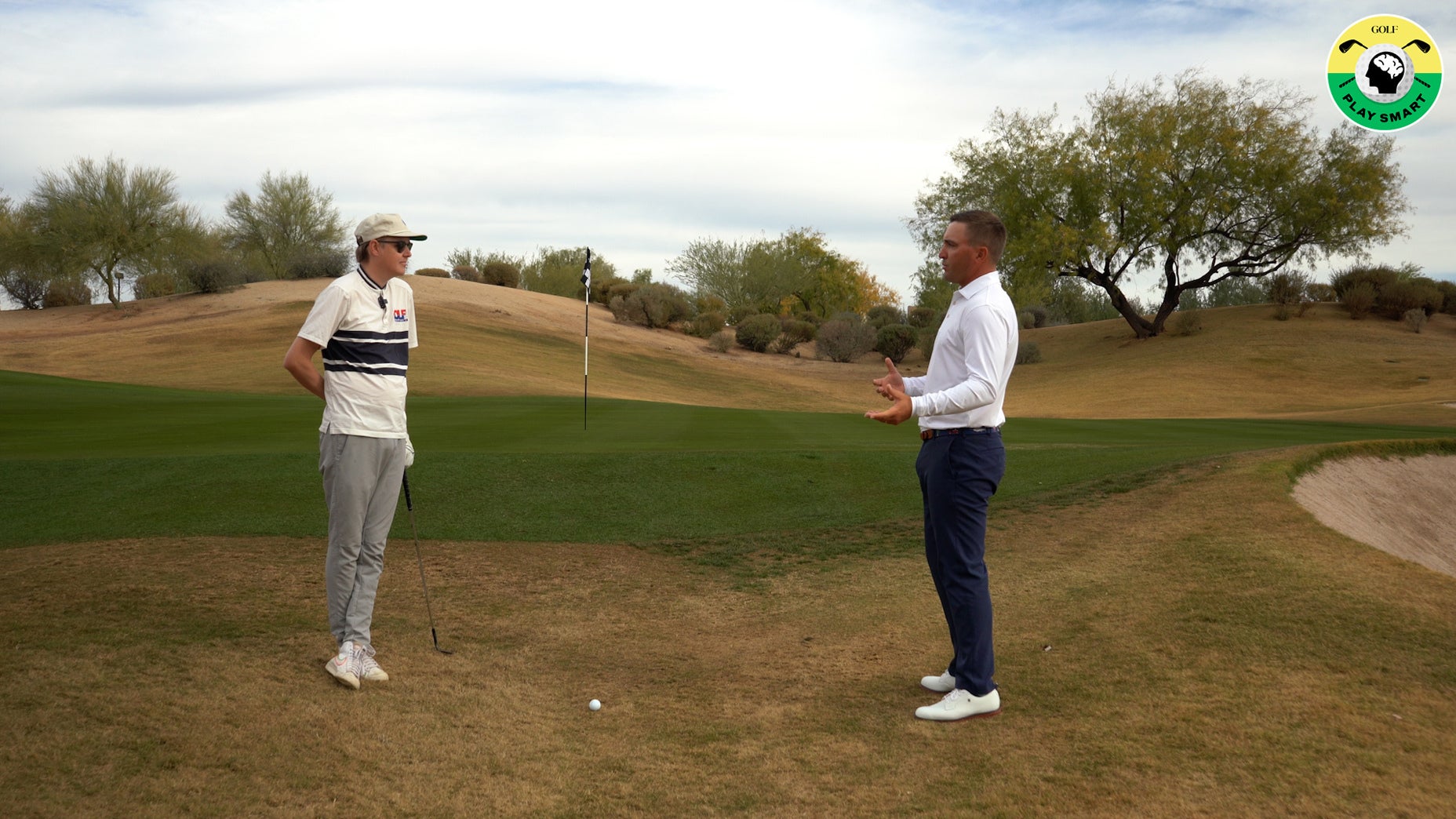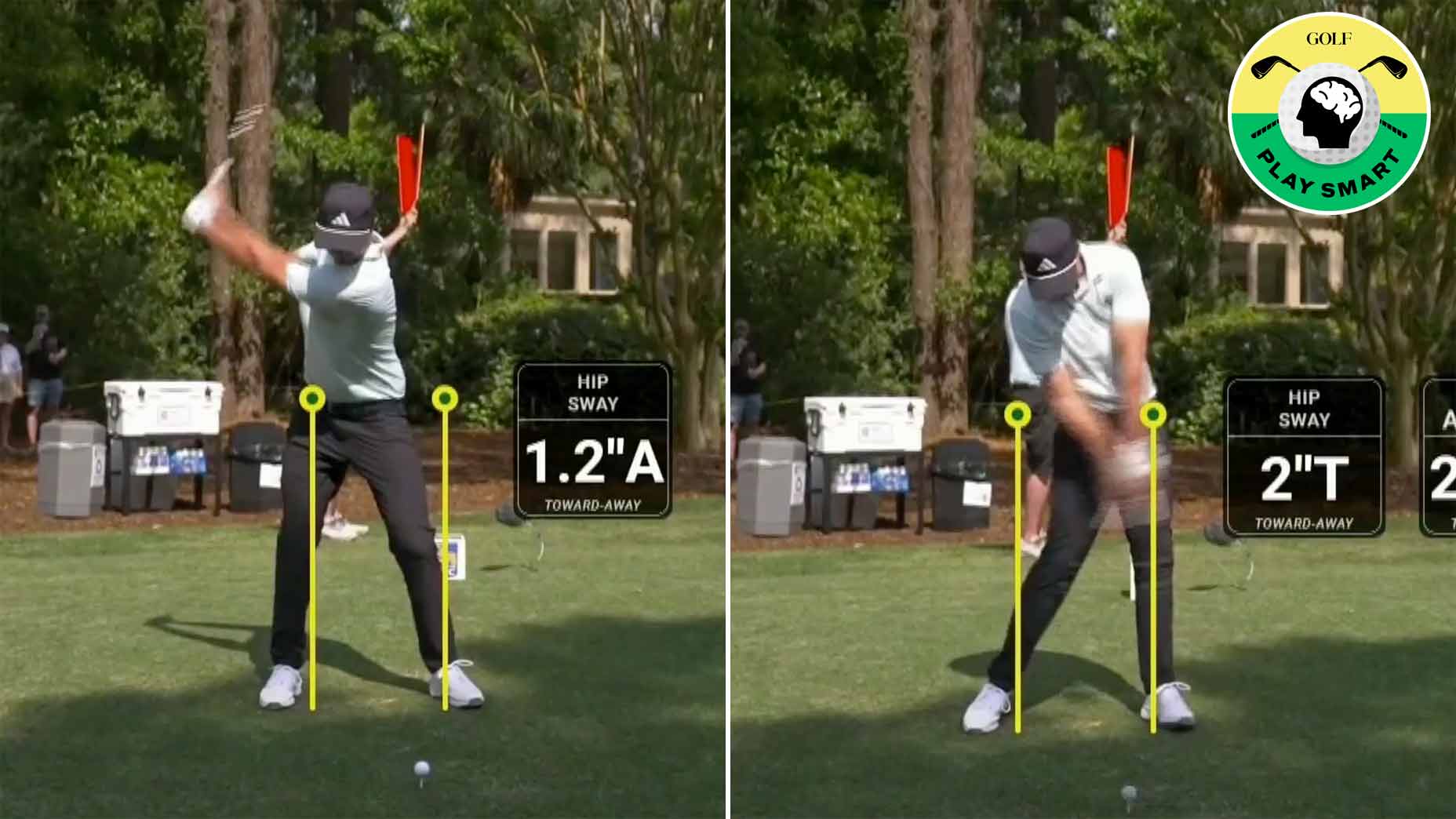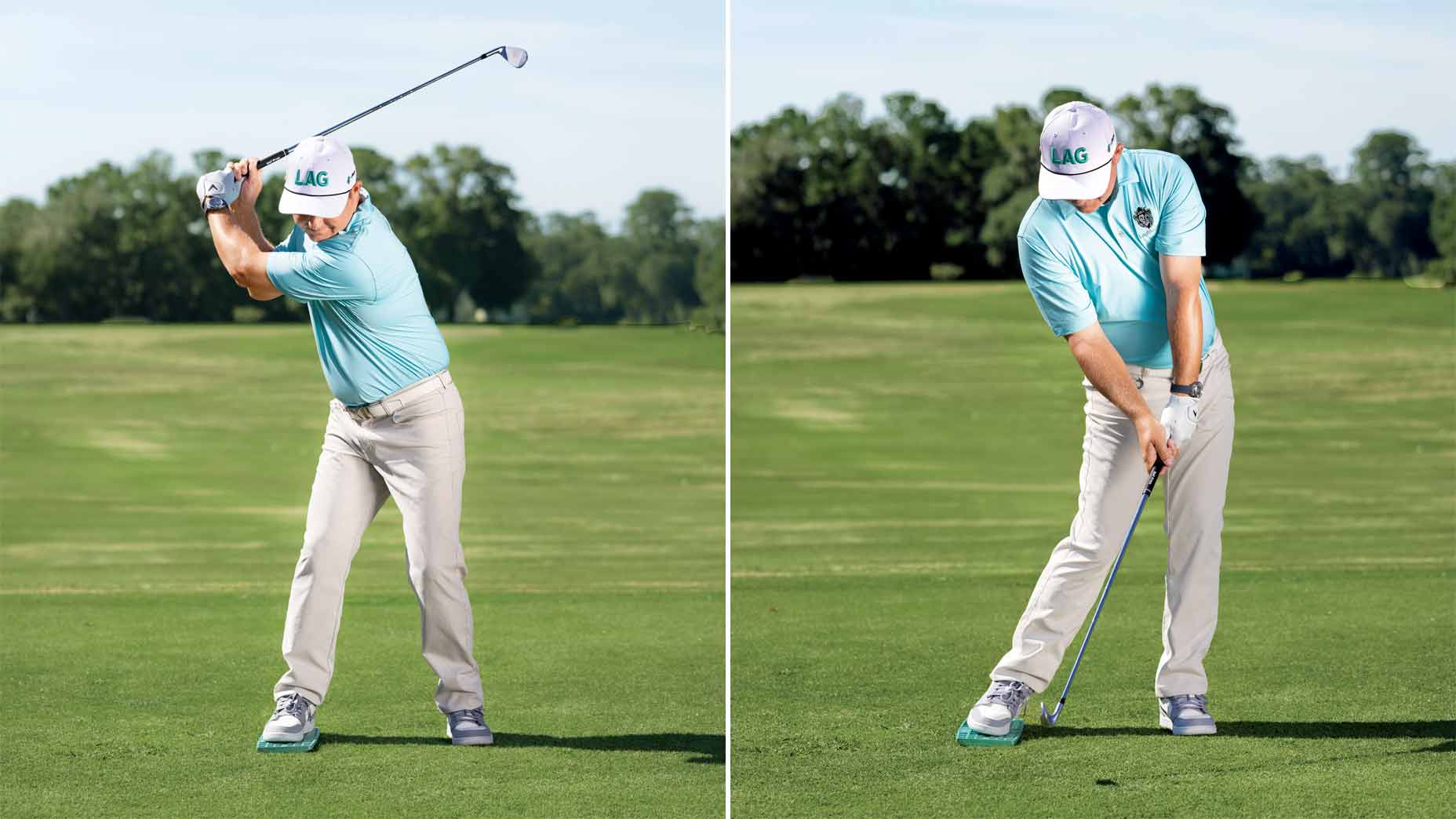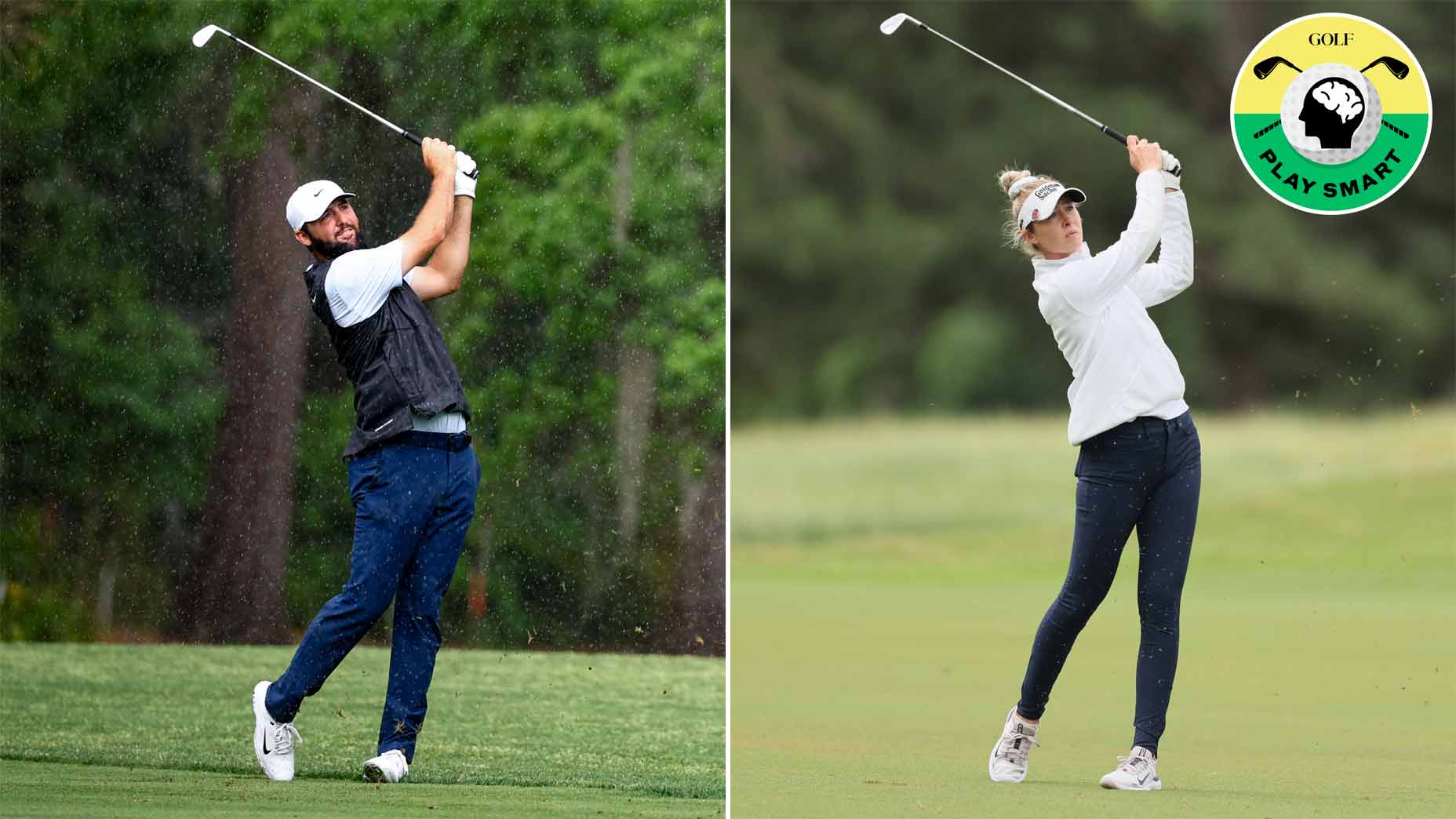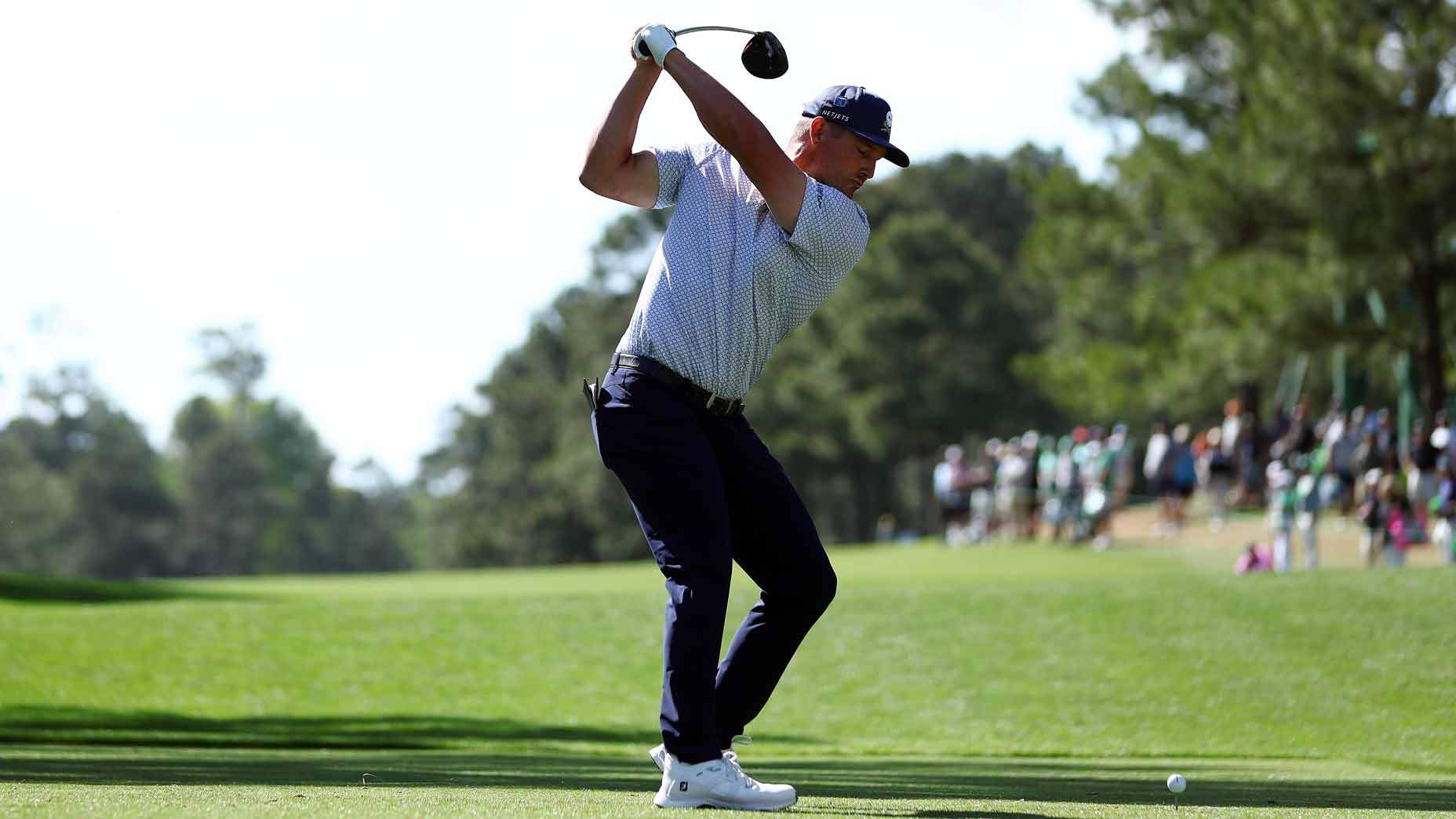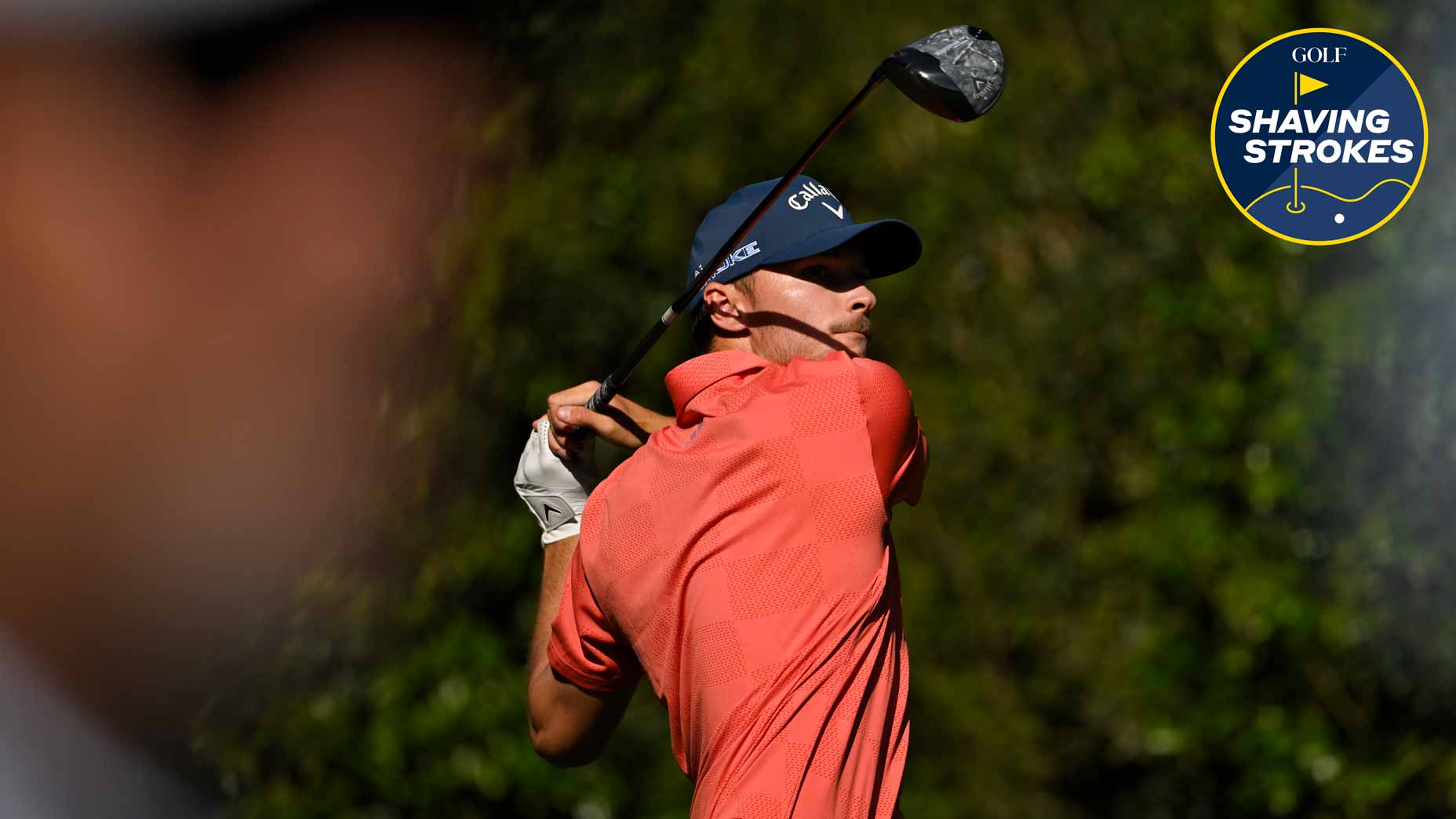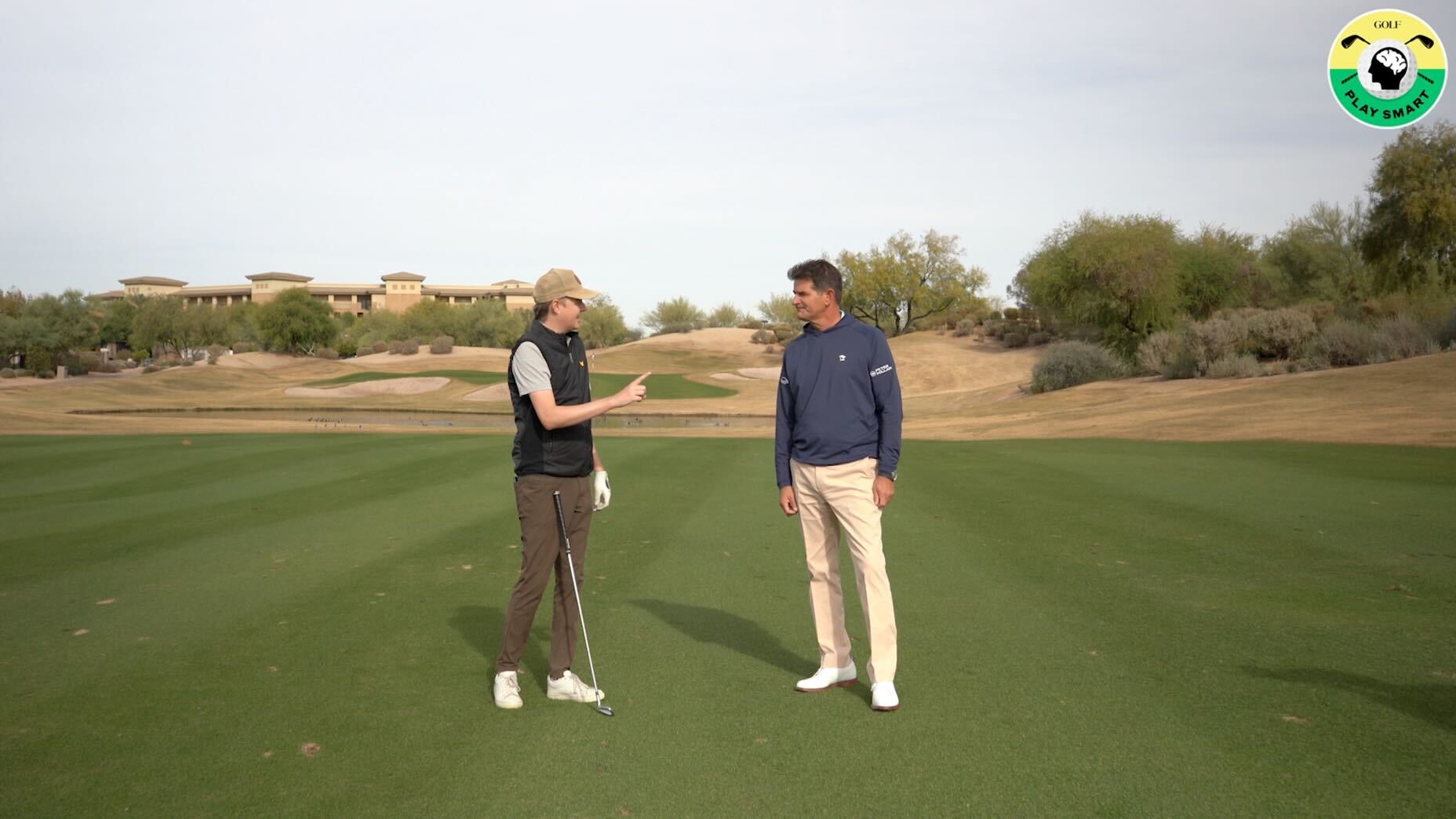Welcome to Play Smart, a regular GOLF.com game-improvement column that will help you play smarter, better golf.
Every hole starts with a tee shot. And if you want to have success on the hole, you typically need to hit a good one.
Why then do most recreational golfers put so little thought into their opening shot? Sure, we think about the swing mechanics and have an idea of where we want to hit it, but for the most part, that’s where the strategizing ends.
The tee shot is unique in that you can be choosey — where you tee the ball up, what kind of lie you want, etc. With all these options at our disposal, recreational players should be putting plenty of thought into how they are approaching this opening shot.
In today’s edition of Play Smart, GOLF Top 100 Teacher Jason Baile shows us one of the most effective ways to use the tee box to your advantage and how it can help lower your scores.
Use positioning to your advantage
When you step onto the tee box — especially on a hole that requires driver — take a moment to scout out the characteristics of the hole. Does the hole dogleg or is it straight? Is the tee box pointing in a particular direction? Where do you want your ball to end up? All of these questions should be answered before you peg your ball.
Next, you need to consider what shot shape you’re most comfortable with. And finally, take note of where the trouble is. Then — and only then! — should you start thinking about where to tee your ball up.
In the video above, the hole doglegs slightly to the left, meaning you’d typically want to hit a draw around it. In order to maximize that shot shape, you’d want to tee up on the far left side of the tee box.
“If you’re comfortable being a draw-biased player, then coming over to the left side of the tee box puts that tree a little bit more at your back,” Baile says. “Opens up the fairway down the right-hand side and looks to fit that shot shape that you like to hit.”
If you like to fade the ball, you’d do the exact opposite and tee the ball up on the right side of the tee box.
“If the hole moved the other way or if you just felt more comfortable, you’d come over here and use the right-hand side of the tee box, opening up the fairway that way,” Baile says.
Additionally, you want to find a spot on the tee box that is as level as possible. Lots of teeing areas are crowned a bit, so the flattest spot will be in the middle. However, if you’re trying to shape the ball a certain direction, this crowning-effect can be used to your advantage. If you’re on the right side and the ball is a bit below your feet, it will make it easier to fade the ball. And if you’re on the left side with the ball slightly above your feet, it will make it easier to draw the ball.
With several yards between the tee markers — and two club lengths behind them — you have plenty of room to move around and play with the angles. If you’re smart about them, they can make the fairways play even bigger and help lower your scores.

